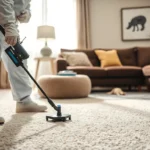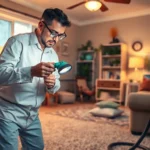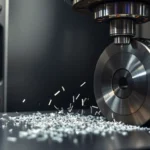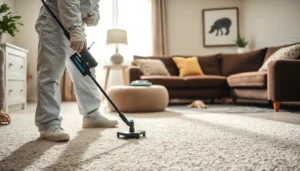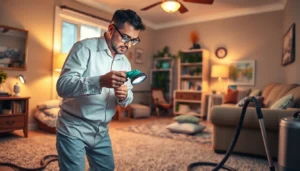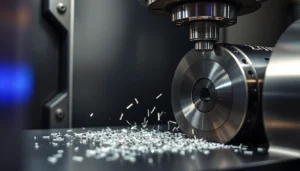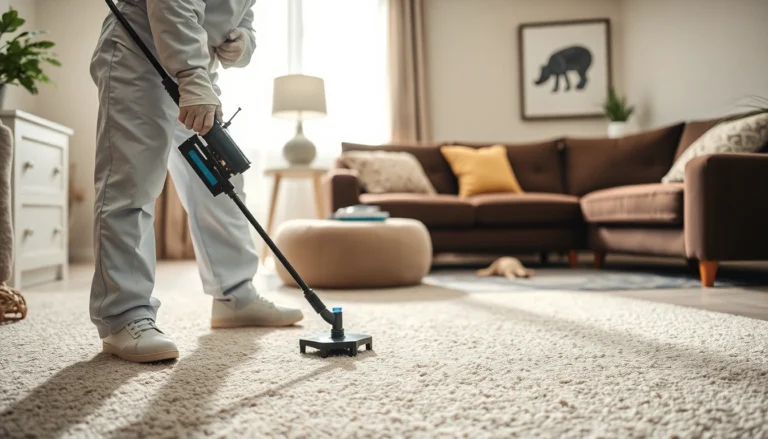Understanding Flea Biology and Risks
Fleas are tiny, wingless insects that pose significant health risks to both animals and humans. Their ability to rapidly reproduce and their resilience make them a formidable pest to control. For anyone experiencing persistent flea issues, understanding their biology and the associated risks is the first step toward effective management. This knowledge forms the foundation for implementing a comprehensive, professional Vlooien bestrijden strategy that safeguards your environment and your loved ones.
Fleas, particularly the cat flea and the dog flea , have a complex life cycle that involves multiple developmental stages: eggs, larvae, pupae, and adults. Each stage responds differently to environmental conditions, which complicates eradication efforts. The adult flea, which is the only stage capable of biting and feeding on blood, is just the tip of the iceberg. The eggs and larvae, often hidden in carpets, bedding, and cracks, are responsible for re-infestations if not properly addressed. The rapid reproduction cycle—where a single adult flea can lay hundreds of eggs within its short lifespan—means that an infestation can escalate quickly if left unchecked.
The Importance of Timely Action
When it comes to flea infestations, time is of the essence. Delaying intervention allows fleas to multiply exponentially, increasing the difficulty and cost of eradication. Early detection and prompt action not only minimize health risks such as allergic dermatitis, anemia, and the transmission of parasites like tapeworms, but also prevent the infestation from becoming a severe nuisance. Moreover, swift treatment preserves the reputation of pet care facilities, hospitality venues, and households, while reducing long-term expenses associated with extensive treatments and damage repair.
Research indicates that fleas can develop from egg to adult in as little as two weeks under optimal conditions—warmth and humidity significantly accelerate their life cycle. In environments where these conditions persist, infestations can become unmanageable within a month. Hence, recognizing early signs such as frequent scratching, visible fleas on pets, or flea dirt in bedding and carpets should trigger immediate professional intervention to break the cycle before it spirals out of control.
Step-by-Step Flea Inspection Techniques
Visual Inspection
Start with a thorough visual check of your pets, focusing on areas where they rest or sleep. Fleas are most active on the neck, base of the tail, and groin. Look for adult fleas, which are small, dark, and agile. Additionally, inspect bedding, carpets, and furniture crevices for flea dirt—tiny black specks that turn red when moistened, indicating blood residue.
Use of Light Traps and Sticky Boards
To detect flea activity in the environment, professionals often deploy light traps or sticky boards. Light traps attract fleas using UV light combined with a CO₂ source, mimicking the presence of a host. Fleas jump onto these devices, providing visual confirmation of infestation levels. Sticky traps placed under furniture or along walls can also capture fleas, giving insight into their activity patterns.
Microscopic Examination
Sampling dust, pet fur, or vacuum debris for microscopic analysis can reveal immature stages—eggs, larvae, and pupae—that are invisible to the naked eye. A trained technician examines these samples under a microscope, identifying the presence of flea stages and determining the infestation’s severity.
Environmental Conditions Assessment
Environmental factors like temperature and humidity influence flea development. Measuring these parameters in suspect areas helps predict the potential speed of flea life cycle progression. Higher humidity and temperatures promote rapid development, indicating an urgent need for treatment.
Integrated Treatment Approaches
Animal Treatment
Effective flea control begins with treating the infested animals. Veterinarians typically recommend a combination of topical spot-on treatments, oral medications, and flea collars with insect growth regulators . These products target adult fleas on the host, rendering them sterile and preventing further reproduction. It is essential to coordinate with a veterinary professional to select the most appropriate treatment plan based on the pet’s health, age, and lifestyle.
Environmental Sanitation
Addressing the environment is equally crucial. Professional omgevingssanering involves cleaning, vacuuming, and chemical treatment of infested areas. The process is carried out in three key phases:
- Initial Cleaning and Vacuuming: Remove all bedding, rugs, and soft furnishings. Vacuum carpets, upholstery, and cracks thoroughly to remove eggs, larvae, and pupae. Dispose of vacuum bags immediately to prevent re-infestation.
- Application of Insecticides and IGRs: Use professional-grade insecticides formulated for flea control, applying them to carpets, baseboards, and cracks. Incorporate IGRs to prevent eggs from developing into adults.
- Thermal and Mechanical Measures: Employ heat treatment devices or steam cleaning to kill all developmental stages, especially in hard-to-reach areas. Mechanical barriers, such as sealing cracks and gaps, restrict flea movement and breeding grounds.
Synergistic Approach
Combining animal treatment with environmental sanitation ensures a comprehensive approach. This synergy maximizes the chances of eradication and reduces the likelihood of resistance development. Regular re-treatment and sanitation cycles are necessary to maintain a flea-free environment, especially in high-risk settings like shelters or kennels.
Monitoring and Ensuring Long-Term Flea Control
Use of Light and CO₂-Traps
Post-treatment monitoring involves deploying light traps with CO₂ to detect residual flea activity. Sensors record jumping activity, and activity curves are analyzed to assess control success. A threshold of fewer than five jumps per trap per week indicates effective control.
Digital Dashboards and Data Tracking
Modern pest control systems utilize digital dashboards that archive trap data, environmental conditions, and treatment history. These tools facilitate trend analysis and predictive modeling, enabling proactive management rather than reactive responses. They also streamline reporting for regulatory inspections and compliance.
Follow-Up Treatments and Guarantees
In cases where flea activity persists beyond expected timelines, professionals offer follow-up treatments at no extra cost within a specified guarantee period, typically 90 days. This approach ensures long-term eradication and peace of mind for clients.
Case Study: Successful Flea Eradication in a Pet Shelter
A pet shelter in Noord-Brabant faced persistent flea infestations despite monthly cleaning routines. Inspection revealed high concentrations of flea eggs and pupae in old parquet joints and beneath radiators. The shelter engaged a professional pest control service specializing in Vlooien bestrijden.
The treatment plan included a combined approach: a targeted IGR and nevel treatment, replacement of sealing kits along baseboards, and implementing body wash protocols for incoming animals. During the following three weeks, flea activity decreased by 96%, and after six months, the shelter was officially declared flea-free.
This case exemplifies that systematic, integrated flea control strategies can achieve sustainable eradication, even in environments with high animal density and complex hiding spots.
Choosing a Professional Flea Control Service
When selecting a pest control provider for Vlooien bestrijden, consider the following factors:
- Experience and Certification: Ensure the technicians are certified and experienced in flea control, particularly in complex environments like shelters, clinics, or commercial spaces.
- Integrated Approach: Opt for providers that combine animal treatment, environmental sanitation, and advanced monitoring tools.
- Guarantee and Follow-Up: Choose services offering guarantees, with provisions for free re-treatment if necessary within a specified period.
- Transparency and Cost Clarity: Confirm that the quotation includes all aspects of the treatment process, with no hidden costs.
Preventative Measures and Maintenance Tips
Prevention is the most effective way to avoid recurring flea infestations. Some essential tips include:
- Regular Pet Treatment: Use veterinarian-recommended flea preventatives year-round, including spot-ons, oral tablets, or flea collars with IGRs.
- Frequent Cleaning: Vacuum carpets and upholstery weekly, paying special attention to cracks, baseboards, and under furniture.
- Environmental Barriers: Seal cracks, gaps, and vents to eliminate hiding spots. Replace old or damaged pet bedding regularly.
- Limit Access to Infested Areas: Avoid allowing pets to roam in outdoor areas with high flea populations or infested environments.
- Monitoring Devices: Use flea traps or sensors to detect early signs of re-infestation, enabling quick intervention.
Legal and Economic Considerations
Implementing professional Vlooien bestrijden aligns with legal standards in many sectors, especially in pet care, hospitality, and food industries. Compliance with local regulations and pest management protocols minimizes the risk of sanctions and legal liabilities. Economically, investing in prevention and professional eradication saves money in the long run by avoiding extensive damage, health costs, and potential business interruptions.
Implementation Workflow
- Intake and Baseline Assessment: Identify infestation hotspots, assess environmental conditions, and determine the developmental stages present.
- Planning and KPI Setting: Prioritize areas, select treatment methods, and establish measurable goals such as reduction in flea activity.
- Execution: Perform animal treatment, environmental sanitation, and thermal/mechanical measures as per the plan.
- Monitoring and Data Collection: Deploy traps, sensors, and record environmental data to track progress.
- Evaluation and Adjustment: Analyze data, adjust treatment protocols if necessary, and provide a comprehensive report and preventive recommendations.
Conclusion: Choose for Structural Flea Control
Flea control is more than a quick fix; it requires a structured, integrated approach that combines animal treatment, environmental sanitation, and continuous monitoring. By choosing a professional and systematic strategy, you ensure long-term success and peace of mind. Regular maintenance, vigilant monitoring, and adherence to best practices prevent re-infestations and protect your health, your pets, and your business reputation. Investing in a comprehensive flea management system today is the most effective way to keep your environment safe, clean, and flea-free for years to come.
Frequently Asked Questions about Flea Control
1. How long does it typically take to eradicate a flea infestation?
With professional treatment and proper sanitation, most infestations can be controlled within 2 to 4 weeks. Complete eradication, including all developmental stages, may take up to 90 days, depending on the severity and environment.
2. Are DIY methods effective against fleas?
DIY methods like using vinegar sprays, salt, or over-the-counter sprays may offer temporary relief but are generally insufficient for complete eradication. Professional pest control employs targeted treatments and monitoring tools for lasting results.
3. How often should I repeat flea treatments?
Typically, treatments are repeated every 4 to 6 weeks, depending on environmental conditions and treatment type. Continuous monitoring helps determine if additional treatments are necessary.
4. Can fleas survive in outdoor environments?
Yes, fleas can thrive outdoors, especially in shaded, humid areas. Preventative outdoor measures include regular yard maintenance and treating outdoor pet areas.
5. Are flea treatments safe for pets and children?
When administered by professionals, treatments are safe and approved for pets and humans. Always follow veterinarian and professional advice to ensure safety and effectiveness.
Wist u dat…
Every flea, during its short lifespan, can lay hundreds of eggs that are invisible to the naked eye, rolling from the host pet onto floors and furniture. Warmth, vibrations, and CO₂ from humans or animals activate the larvae, leading to new generations of biting adult fleas within two to three weeks. This rapid cycle underscores why Vlooien bestrijden must be a systematic, comprehensive effort. Without professional intervention, flea populations can quickly spiral out of control, creating ongoing health hazards and infestations that are difficult to eliminate.
Proper control involves understanding flea biology, detecting infestations early, executing integrated treatment plans, and maintaining vigilant monitoring. Only through a structured approach can you break the cycle and enjoy a flea-free environment for the long term.

